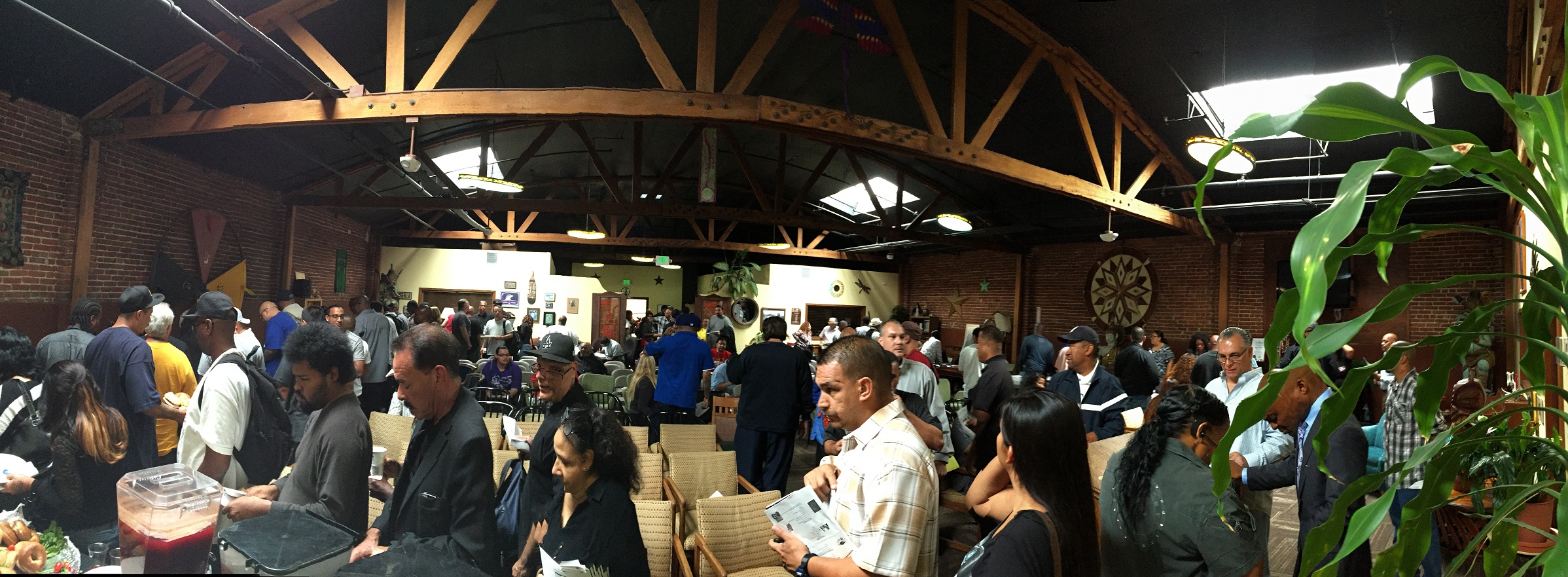
In 2011 counties throughout California began taking on the responsibility of incarcerating and supervising non-violent felons. This was state-mandated realignment and as time went on, many counties began exploring new ways of addressing reentry, diversion and the supportive services that could potentially prevent crime or the revolving door to the criminal justice system.
Los Angeles County, however, took a more established approach, directing a full 80 percent of its $1.1 billion from the state toward incarceration and supervision in the first four years of realignment. An LA Times editorial lamented that the state’s largest county has yet to become the “leader in smart and effective justice” it ought to be.
But that’s exactly what a growing coalition of cross-sector service providers is pushing for. Under the smart and strategic guidance of project leader Peggy Edwards, the Los Angeles Regional Reentry Partnership has become a major player in the reentry policy arena since it formed in 2012. Member organizations number about 350 now and work in the areas of physical and mental health, homelessness, family reunification, housing, legal services, and substance abuse prevention and treatment.
“Now is the time to shape the process of reentry in California and Los Angeles,” Edwards says emphatically. With state funding in place, a shift in public attitudes toward criminal justice, a greater understanding about brain development and its impact on juveniles, Edwards sees a shift happening around reentry and incarceration, one that her group is working to capitalize on.
Together the network has been instrumental in influencing the County of Los Angeles to implement split sentencing (serving part of the sentence on probation rather than in prison) and to consider other alternatives to incarceration. They successfully advocated for eliminating the ban on people on probation and parole from the county’s rental assistance program, ending the plan to incarcerate 500 LA County prisoners in Kern County’s City of Taft, securing case management services for those impacted by re-alignment, and developing and implementing a plan to secure housing, drug treatment, and employment services for lifers released under Prop 36. Resource fairs they help sponsor are helping former incarcerated people navigate Prop 47 (which redefined some nonviolent offenses, most related to drug possession, as misdemeanors) and access resources to help them stabilize their lives post-incarceration.
“Coming together as a network allows leaders in these agencies to accomplish their goals through collective action,” says Edwards. It’s work that she knows intimately, somehow balancing leadership duties for both LARRP and the United Homeless Healthcare Partners, which is another regional network of service and advocacy organizations. Edwards started that group in 2006, eventually coming under fiscal sponsorship with Community Partners for a time. Which is why, when helping to form LARRP, she turned to Community Partners from the start.
“We needed a neutral home,” she explained, an important element whenever independent organizations come together as a network or coalition. “And we needed gravitas, a name so that partners and funders would see that we were legit.” (Read more about networks from CEO Paul Vandeventer here.)
Most recently LARRP launched the 50% Campaign, an advocacy effort to ensure that half of the County’s realignment funds go to programs, housing, & services. And they increasingly serve as the go-to experts for key leaders at the County level on how homeless services, and other related programs, need to work hand-in-hand to achieve successful realignment.
“We can no longer afford to frame reentry and incarceration through a law enforcement lens alone,” Edwards says recently, noting that the County’s approach had been “a dysfunctional system that has short-changed services that could save money and reduce recidivism, homelessness and other costly co-existing problems.”

